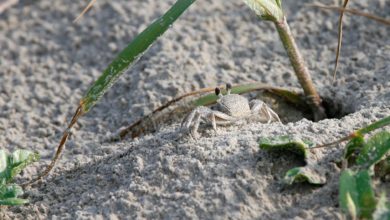Birds nesting in the dunes
Every spring, the Houston Audubon Society ropes off an area of its Bolivar Peninsula refuge high up on the beach near the dunes to protect the breeding grounds of the Least tern (Sternula antillarum) and Wilson’s plover (Charadrius wilsonia).
Both populations have declined dramatically along the Texas coast, and both are highly sensitive to disturbances during their breeding season. A 1979-2007 shorebird census on Mustang Island, for example, documented a 36% decrease in the Least Tern and a 63% decline in the Wilson’s Plover populations.
Both birds nest high on the beach and among dune vegetation. Their nests are little more than a scrape in the sand. Coastal dunes and associated habitats are attractive to breeding shorebirds because they offer both thick cover and ready food supplies. Least terns feed on small fish that they capture with a steep dive into the surf. Males often will offer a fish to prospective partners as part of their mating ritual. Wilson’s plovers rely on insects, small crabs and other crustaceans.
References
Foster, C.R., Amos, A.F. and Fuiman, L.A. (2009) Trends in abundance of coastal birds and human activity on a Texas barrier island over three decades. Estuaries and Coasts 32(6): 1079-1089.


